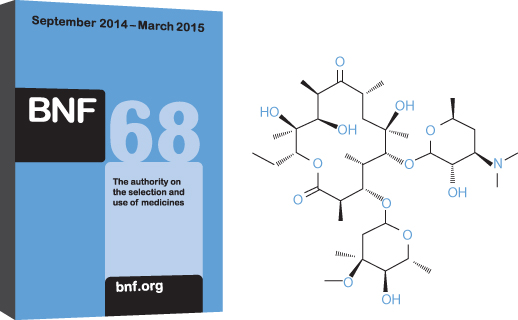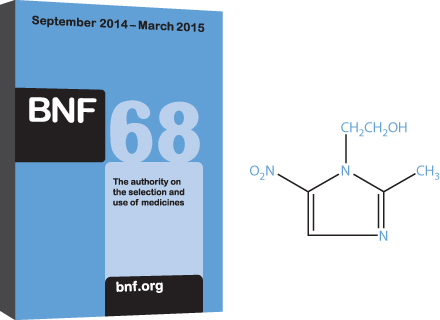13
Calculations involving information retrieval
The aim of this chapter is to present calculations in a simulated real-life situation. Pharmacists presented with checking prescriptions or answering queries from other healthcare professionals may need to retrieve the correct information about a drug, before performing a calculation. For example, in practice an individual drug may be used to treat several different disease states, each disease state often requiring a different dose, dosage form, formulation, etc. Similarly, the dose and dosage regimen may differ depending on the age and or weight of the patient. The ability to retrieve the correct information from information source(s) is an essential skill. In addition, a calculation using retrieved information may involve several steps or the use of more than one concept, e.g. the calculation of a dose based on body weight and the calculation of a percentage solution. Thus, the ability to perform different types of calculations correctly is as important as the ability to retrieve the correct information.
Previously in this book, readers have been given all the information in the question to perform the calculation. This chapter sets out to provide examples where information retrieval is essential before performing the calculation.
In this chapter, profiles of a number of exemplar drugs are provided. Each profile includes details, as appropriate, of dose (by age/weight/route of administration/disease state), formulations available with quantitative details and such information as salts, molecular weights.
Calculations are based only on the exemplar drug profiles provided in the chapter. Each calculation requires the reader initially to retrieve information from the profiles and use this information to perform the calculation. The calculations normally require more than one simple step and/or the performance of more than one type of calculation. Each drug profile is followed by a number of questions that relate to that drug.
Drug A profile
Dose
By mouth for mild infections: adults and children over 8 years, 500 mg every 6 hours or 1 g every 12 hours; neonates 12.5 mg/kg every 6 hours; child 1 month to 2 years 125 mg every 6 hours and 2–8 years 250 mg every 6 hours.
Early syphilis: 500 mg four times daily for 14 days.
By intravenous infusion: adult and child severe infections 50 mg/kg daily by continuous infusion; mild infections (where oral treatment not possible) 25 mg/kg daily.

| Formulations available: | ||
| Tablets | Drug A 250 mg | |
| Drug A (as stearate) 250 mg | ||
| Oral suspension | Drug A (as ethyl succinate) 125 mg/5 mL, 250 mg/5 mL, 500 mg/5 mL | |
| Intravenous infusion powder for reconstitution | Drug A (as lactobionate) 1-g vial | |
Answer the following questions that relate to drug A.
| Q1 | A patient who has difficulty swallowing tablets has been diagnosed with early syphilis. What dose and strength of suspension of drug A would you prescribe for this patient to take at home? What total quantity of this suspension would you prescribe for a complete course of treatment? What is the total quantity (in g) of drug A prescribed? |
| Q2 | A neonate (weighing 3.5 kg) with a mild infection requires treatment with drug A. The prescriber decides to use the oral route. What dose and daily dose of drug A should be given to the child? Which strength of suspension should be used and how much of this suspension should be given for each dose? |
| Q3 | A child aged 5 years has a severe infection and requires an intravenous infusion of drug A. What is the total dose of drug A required for 24 hours for this child and what is the dose in mg/hour? Assuming that a vial of drug A is made up to 500 mL, what volume of infusion fluid should be given per hour? What is the concentration (as a percentage) of drug A in the infusion fluid? |
Drug B profile
Dose
Anaerobic infections treated for 7 days: by mouth, 800 mg initially then 400 mg every 8 hours and child 7.5 mg/kg every 8 hours; by rectum, 1 g every 8 hours for 3 days, then 1 g every 12 hours; by intravenous infusion over 20 minutes, 500 mg every 8 hours and child 7.5 mg/kg every 8 hours.

Acute oral infections, by mouth: 200 mg every 8 hours for 5 days; child 1–3 years 50 mg every 8 hours for 5 days; 3–7 years 100 mg every 12 hours; 7–10 years 100 mg every 8 hours.
| Formulations available: | ||
| Tablets | Drug B 200 mg, 400 mg, 500 mg | |
| Suppositories | Drug B 500 mg and 1 g | |
| Suspension | Drug B 200 mg/5 mL | |
| Intravenous infusion | Drug B 5 mg/mL supplied in 20-mL and 100-mL containers | |
Answer the following questions that relate to drug B.
| Q4 | An adult patient with an anaerobic infection requires a course of treatment with drug B. How many tablets of what strength should be supplied for one course? |
| Q5 | A 2-year-old girl has an acute oral infection and requires a course of oral treatment with drug B. She is unable to take tablets but can swallow liquids. What formulation should be supplied? Calculate the amount of formulation to be supplied for each dose, daily dose and total treatment. |
| Q6 | A 10-year-old boy, weighing 30 kg, requires oral treatment with drug B for an anaerobic infection. He cannot swallow tablets and so a liquid formulation is preferred. Calculate the dose and total volume of suspension to be supplied. Calculate your answer to one decimal place. |
| Q7 | An elderly patient with swallowing difficulties requires suppositories to treat an anaerobic infection. Only suppositories containing 500 mg of drug B are available. She requires a dose of 1 g twice daily. Calculate the number of suppositories required for a dose and the total number required for a 7-day course of treatment. |
| Q8 | A child with an anaerobic infection requires treatment by intravenous infusion of drug B. The child is 3 years old and weighs 15 kg. Calculate the dose required. What volume of intravenous infusion will supply this dose? |
Drug C profile
Dose
For infections, by mouth: females 500 mg daily in two divided doses, males 600 mg daily in three divided doses; child 3 months to 6 years  daily in four divided doses, 6–12 years
daily in four divided doses, 6–12 years  daily in four divided doses.
daily in four divided doses.
For patients unable to take drug C by mouth, intravenous infusion 2 mg/kg every 4 hours, child 3 months to 6 years  every 6 hours, 6–12 years
every 6 hours, 6–12 years  .
.
| Formulations available: | ||
| Capsules | Drug C 100 mg and 250 mg | |



